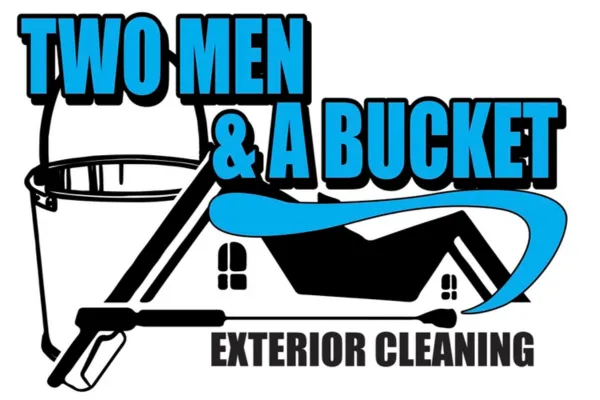Have Questions?
Checkout our blog you'll probably find the answer...

What are the best practices for cleaning gutters to ensure proper drainage and prevent clogs?

Two Men and A Bucket's Website
PHONE: 314-761-9049
EMAIL: twomenexteriors@gmail.com
More On Gutter Cleaning Here!
Learn more about gutter cleaning and what is should cost here!
What are the best practices for cleaning gutters to ensure proper drainage and prevent clogs?
What Are the Best Practices for Cleaning Gutters to Ensure Proper Drainage and Prevent Clogs?
Keeping gutters clean and clog-free is essential for protecting your home from water damage, pest infestations, and structural issues. Whether you’re a DIY enthusiast or looking to hire a professional, here’s everything you need to know to maintain gutters effectively. Following these best practices will ensure that water flows properly, preventing costly repairs down the line.
1. Understand Why Clean Gutters Matter
Clogged gutters can lead to various issues such as:
Foundation Damage: Water overflowing from blocked gutters may pool around the foundation, leading to cracks and potential flooding.
Roof and Siding Damage: Overflowing water can damage the roof, fascia, and siding.
Pest Infestation: Stagnant water in clogged gutters attracts insects and rodents.
Landscape Erosion: Excess water can harm landscaping by causing erosion around plants and flower beds.
2. Best Time of Year for Gutter Cleaning
To maintain optimal drainage, it’s best to clean gutters at least twice a year—typically in spring and fall. Here’s why:
Spring: Clear out debris left from winter storms and prepare for spring showers.
Fall: Remove fallen leaves and other organic material before winter freezes.
If your home is surrounded by trees, you may need to clean gutters quarterly to prevent buildup and maintain proper flow.
3. Essential Tools for Gutter Cleaning
Effective gutter cleaning starts with the right tools:
Sturdy Ladder: Make sure it’s tall enough to reach your gutters safely.
Gloves: Protect hands from debris and sharp objects.
Small Scoop or Trowel: Helps remove wet leaves and dirt.
Garden Hose: Flush out remaining debris and check for blockages.
Protective Eyewear: Guards eyes from splashes and debris.
Consider investing in a gutter scoop for better efficiency or a wet/dry vacuum with gutter attachments, especially if your gutters are hard to reach.
4. Step-by-Step Guide to Cleaning Gutters
Cleaning gutters is straightforward with these steps:
Step 1: Clear large debris by hand or with a scoop, starting at the downspouts. Focus on sections with visible blockages.
Step 2: Use a garden hose to rinse out the gutters, working from the far end to the downspout. This clears small debris and checks drainage flow.
Step 3: Flush the downspouts with the hose; if blocked, try a plumber’s snake to dislodge the clog.
Step 4: After cleaning, visually inspect for sagging or damage, which can interfere with proper drainage. Tighten any loose gutter hangers if needed.
5. Preventive Measures to Keep Gutters Clear
Investing in preventive tools and maintaining your surroundings can reduce the frequency of gutter cleaning:
Trim Overhanging Branches: Branches that hang over your roof can drop leaves, sticks, and other debris into gutters, causing rapid clogging, especially during windy or stormy weather. Trim these branches back regularly to reduce the amount of falling debris, keeping gutters clearer for longer.
Clear Debris from the Roof: Leaves, twigs, and dirt that gather on your roof will eventually end up in your gutters if not removed. Periodically clear debris off the roof, particularly after heavy storms, to prevent accumulation that can quickly clog gutters. This not only protects the gutters but also prevents potential water damage and mold growth on the roof.
Install Gutter Guards: Gutter guards like mesh screens, foam inserts, or brush guards filter out large debris while allowing water to flow. While these guards minimize the buildup of leaves and twigs, they still require periodic maintenance to keep the gutters fully functional.
Add Leaf Traps for Downspouts: Leaf traps catch debris before it flows into the downspouts, helping to prevent blockages. These are especially useful if your gutters are already protected with guards but need extra support in high-debris areas.
Ensure Proper Gutter Slope: Gutters need a slight slope (1/4 inch per 10 feet) toward the downspout to encourage water flow and prevent pooling. Adjust gutter hangers as needed to maintain this slope for optimal drainage.
6. Dealing with Hard-to-Reach Clogs
Sometimes, clogs are tricky to reach, especially in downspouts. Here’s how to handle them:
Use a Power Washer: Attach a gutter cleaning wand to your power washer to blast away tough clogs.
Try a Plumber’s Snake: For stubborn downspout clogs, a plumber’s snake can work to break up the blockage.
Dismantle the Downspout: If clogs persist, consider disassembling the downspout to remove trapped debris.
7. Benefits of Regular Gutter Maintenance
The effort you put into gutter maintenance protects your home in several ways:
Reduced Risk of Water Damage: Regular cleaning keeps water flowing away from your home, protecting the foundation, roof, and walls.
Extended Gutter Lifespan: Clean gutters are less likely to sag, warp, or break, saving on replacement costs.
Healthier Landscape: By diverting water properly, gutters protect your lawn, garden, and soil from erosion.
Enhanced Home Value: Well-maintained gutters add to curb appeal and protect against water damage that can deter buyers.
8. When to Call in Professionals
While DIY gutter cleaning is doable for most, some scenarios call for professional help:
Multistory Homes: Heights can pose risks; professionals have the right safety gear and experience.
Extensive Blockages: Thick clogs or complicated downspout blockages may need specialized tools.
Structural Issues: Sagging gutters, detached downspouts, or damaged gutters require expert repair.
Hiring professionals also ensures thorough inspection and maintenance, which can extend the life of your gutters and prevent unexpected damage.
Conclusion
Regular gutter cleaning is essential to protect your home from water damage, structural issues, and pest infestations. By following these best practices, you can ensure proper drainage, reduce the risk of clogs, and extend the lifespan of your gutters. Whether you’re tackling this as a DIY project or enlisting professional help, a little attention to your gutters can go a long way in safeguarding your home.
Frequently Asked Questions
Answers To Common Questions
How often should I have my exterior cleaned?
The frequency of exterior cleaning depends on factors such as the climate, level of pollution, and type of surfaces. Typically, it's recommended to have your exterior cleaned annually or bi-annually to maintain its appearance and prevent damage.
What are the benefits of exterior cleaning for my property?
Exterior cleaning not only improves the appearance of your property but also helps prevent deterioration caused by dirt, mold, mildew, and pollutants. It can extend the lifespan of your exterior surfaces and increase the overall value of your property.
Is exterior cleaning safe for my plants and landscaping?
Our exterior cleaning services use eco-friendly and biodegradable cleaning solutions that are safe for plants and landscaping. Additionally, precautions are taken to protect delicate vegetation during the cleaning process.
What are the different methods used for exterior cleaning?
Common methods for exterior cleaning include pressure washing, soft washing, hand washing, and chemical washing. The method used depends on the type of surface being cleaned and the level of dirt or stains present.
How much does exterior cleaning typically cost?
The cost of exterior cleaning varies depending on factors such as the size of the property, the type of surfaces being cleaned, and the level of cleaning required. It's best to request a quote from our website to learn more!
Why should we have our property cleaned?
Just like having your teeth cleaned, it helps prevent bigger, more expensive problems in the future, while making everything look nicer today.
